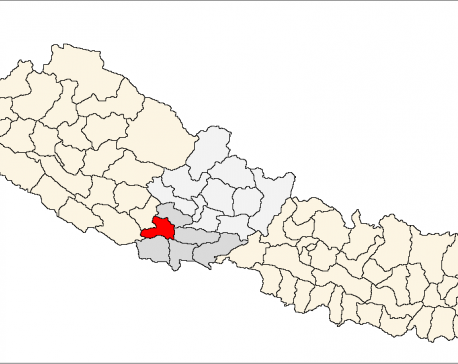
OR
Migrant worker deaths
It is wonderful to see the government of Nepal take a proactive step to first investigate and then, hopefully, to prevent the untimely deaths of Nepali migrant workers abroad. Of all the international destinations, Malaysia hosts the most (around 550,000) Nepali migrant workers. Climate-wise, the mild Malaysia is a far more pleasant place to work in as compared to the searing heat of the Gulf countries. And yet a disproportionate number of young and seemingly healthy Nepalis are dying in Malaysia. Since 2003, at least 3,800 ‘physically and mentally fit’ Nepalis have died while working in that country, according to data obtained by Republica from the Ministry of Foreign Affairs. The rate at which Nepali migrant workers are dying in Malaysia is far higher compared to the 110 other countries identified as work destinations by Nepal government. For instance, compared to Qatar, which also hosts over 500,000 Nepali workers, the rate of death is twice as high in Malaysia. Analysis of the postmortem reports issued by Malaysian hospitals attribute most sudden deaths of Nepalis to ‘cardiac arrest’ and ‘heart attack’.
Yet why would seemingly healthy workers, most of whom are in their 20s and 30s, have these heart ailments that are mostly linked to old age? Something is clearly amiss. Nepali experts and related government officials have long suspected that since the Malaysian employers are not obliged to pay compensations to the families of workers dying of causes other than road and workplace accidents, these employers might be working in cahoots with local hospitals to alter postmortem reports. Hopefully, we will soon find out the truth. A delegation of Nepali officials that includes medical doctors is currently in Kuala Lampur, the Malaysian capital, to look into the untimely deaths of Nepali workers there. The team put together under the initiative of the Ministry of Labor and Employment will, upon the completion of its on-site study, offer suggestions on ways to reduce the number of these deaths. It is timely, too; the Nepali state was being widely criticized, both in and out of the country, for its failure on this front. All that the government had done so far for migrant workers was to provide them with pre-departure orientation on such things as the culture, climate and traffic rules in destination countries.
This is a laudable initiative also because up until now even the little that was being done for migrant workers was based on speculations: that the workers might have been dying of heat strokes, from overwork or from poor food and dismal living conditions. The relevant actors in Nepal, not just in the government but even in the media and NGOs, for their part, seemed to have meekly accepted these deaths as an unavoidable facet of foreign employment. Others who suspected something fishy chose to stay mum in the absence of clear evidence to back their hunch. In retrospect, it is hard to believe that successive governments failed to take the most commonsensical step: of sending a team of health experts to ground zero to investigate. But better late than never. Hopefully, the team will come back with something useful. If the team does its job well, its informed suggestions could save countless lives.
You May Like This

Prem Geet 2: Hope for true love, hope for better films
Though set in Burma, ‘Prem Geet 2’ from the very start talks about nationalism and tries to promote the rich... Read More...

Police team mobilized to gun down man-eater leopard
ARGHAKHANCHI, Aug 31: A police team has been mobilized to find a leopard that has created a terror in a... Read More...

Govt team arrives in Mustang for mine research
Mustang, June 28: A government team arrived in Mustang on Monday to carry out a study on possible fuel and... Read More...

Just In
- 19 hydropower projects to be showcased at investment summit
- Global oil and gold prices surge as Israel retaliates against Iran
- Sajha Yatayat cancels CEO appointment process for lack of candidates
- Govt padlocks Nepal Scouts’ property illegally occupied by NC lawmaker Deepak Khadka
- FWEAN meets with President Paudel to solicit support for women entrepreneurship
- Koshi provincial assembly passes resolution motion calling for special session by majority votes
- Court extends detention of Dipesh Pun after his failure to submit bail amount
- G Motors unveils Skywell Premium Luxury EV SUV with 620 km range
















Leave A Comment